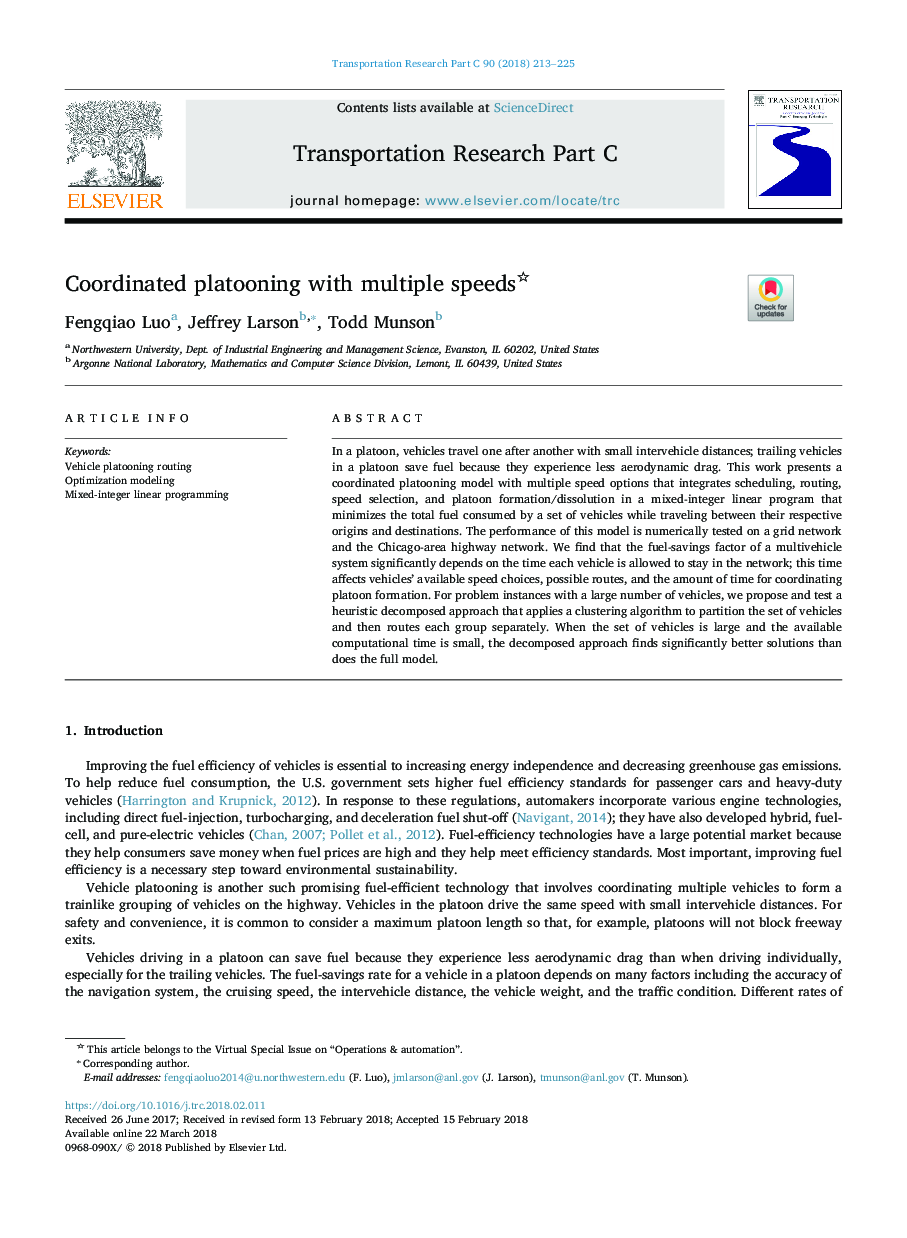| Article ID | Journal | Published Year | Pages | File Type |
|---|---|---|---|---|
| 6935999 | Transportation Research Part C: Emerging Technologies | 2018 | 13 Pages |
Abstract
In a platoon, vehicles travel one after another with small intervehicle distances; trailing vehicles in a platoon save fuel because they experience less aerodynamic drag. This work presents a coordinated platooning model with multiple speed options that integrates scheduling, routing, speed selection, and platoon formation/dissolution in a mixed-integer linear program that minimizes the total fuel consumed by a set of vehicles while traveling between their respective origins and destinations. The performance of this model is numerically tested on a grid network and the Chicago-area highway network. We find that the fuel-savings factor of a multivehicle system significantly depends on the time each vehicle is allowed to stay in the network; this time affects vehicles' available speed choices, possible routes, and the amount of time for coordinating platoon formation. For problem instances with a large number of vehicles, we propose and test a heuristic decomposed approach that applies a clustering algorithm to partition the set of vehicles and then routes each group separately. When the set of vehicles is large and the available computational time is small, the decomposed approach finds significantly better solutions than does the full model.
Related Topics
Physical Sciences and Engineering
Computer Science
Computer Science Applications
Authors
Fengqiao Luo, Jeffrey Larson, Todd Munson,
